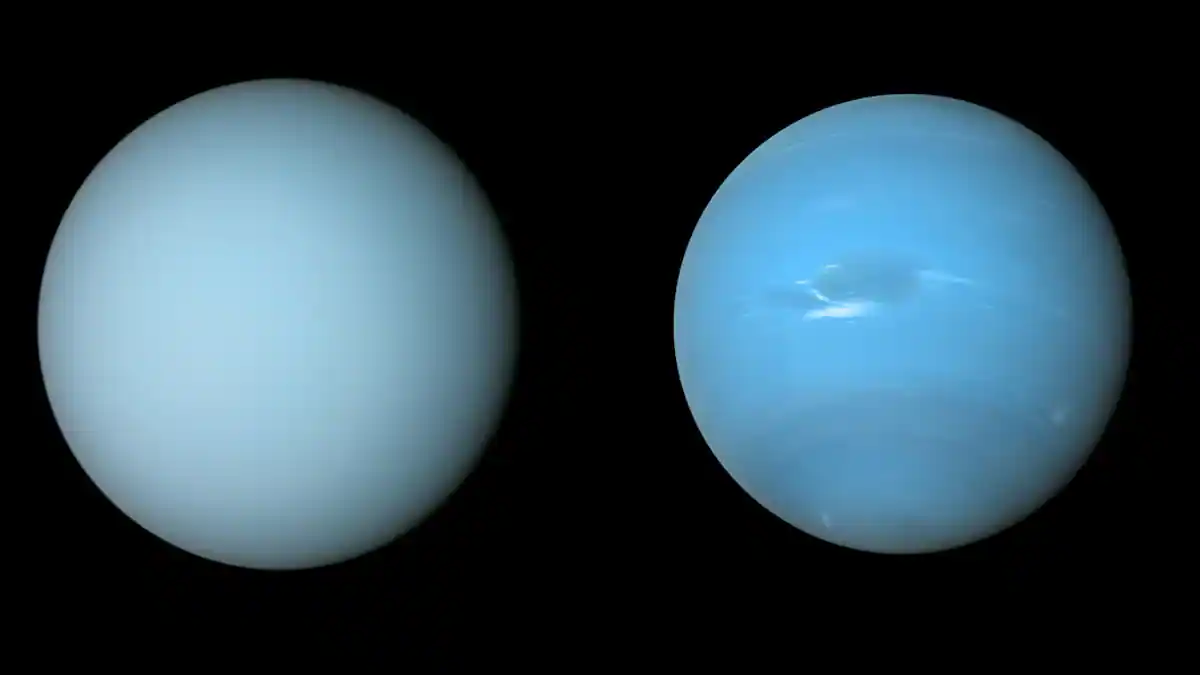In the solar system family, Uranus and Neptune are almost twins, with the exception of one nuance: the former is much paler than its sister due to a thick layer of haze that astronomers have just discovered after years of wondering.
Uranus and Neptune are the farthest planets in the solar system (the seventh and eighth), and they orbit respectively 2.9 billion and 4.5 billion km around our star. Two small icy worlds explored – only one probe, Voyager 2 in the late 1980s, flew over them.
Since then, thanks to terrestrial and space-based observatories, astronomers have learned to better understand these giants, both of which are made of gas. They were able to note significant similarities in diameter (50,000 km each, five times more than Earth), temperature (about -200 ° C), mass and composition of the atmosphere.
The presence of methane, a gas that absorbs infrared radiation, gives the sisters the same bluish hue, in contrast to the warm colors of Jupiter and Saturn, the other two gaseous planets in the solar system.
But at visible wavelengths, the blue of Neptune appears brighter than that of Uranus, a difference that astronomers struggled to explain until new research came to a single cause.

NASA: Jet Propulsion Laboratory Courtesy of NASA, 1989, NASA image
Published Tuesday in the Journal of Geophysical Research (JGR), they suggest a haze layer exists on both planets, but is thicker on Uranus. Which “whitens” the appearance of his skin, explains to AFP Patrick Irwin, a planetary scientist at Britain’s Oxford University, the study’s lead author.
To reach this conclusion, he and his team combined old data collected by Voyager 2 with newer data from the Hubble and Gemini North (Hawaii) telescopes. They developed a model that describes the different layers of the ice giants’ atmosphere, over a wide range of wavelengths (ultraviolet, visible and near infrared) – previous research focused on specific wavelengths.
One of these layers, containing hazy “photochemical” particles, was found to be twice as thick as Uranus. These particles absorb the sun’s ultraviolet rays, and will be the cause of the slightest reflection of ultraviolet rays observed on the planet. They may also explain this faint blue color visible to the human eye, “given that these particles reflect on a visible spectrum close to white,” details the study.
With Neptune’s atmosphere regenerating more quickly, it would be more effective in expelling the layer of mist at the origin of Uranus’ pallor.
It’s also in this atmospheric haze that the key to the mystery of dark spots visible mostly on Neptune, and rarely on Uranus, could lie, Dr. Irwin advances.

“Proud thinker. Tv fanatic. Communicator. Evil student. Food junkie. Passionate coffee geek. Award-winning alcohol advocate.”

